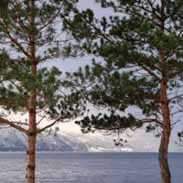Igneous Rocks Flashcards, test questions and answers
Discover flashcards, test exam answers, and assignments to help you learn more about Igneous Rocks and other subjects. Don’t miss the chance to use them for more effective college education. Use our database of questions and answers on Igneous Rocks and get quick solutions for your test.
What is Igneous Rocks?
Igneous rocks are one of the three major types of rock that make up Earth’s crust. These rocks form when molten material (magma or lava) cools and solidifies. Igneous rocks have a number of unique characteristics that set them apart from other types of rock. First, igneous rocks are made out of various minerals that are formed when magma or lava cools down and solidifies. The most common minerals found in igneous rocks include quartz, feldspar, mica and hornblende. These minerals give the rock its characteristic texture and coloration. For example, an igneous rock composed mainly of quartz may be gray in color while one composed mainly of feldspar may be pinkish in color. Second, igneous rocks form through two main processes: intrusive and extrusive processes. Intrusive processes occur when magma cools beneath the surface whereas extrusive processes occur when lava cools on the surface after being erupted from a volcano or fissure vent. Third, the formation environment in which an igneous rock forms can greatly affect its properties such as texture, composition and chemical makeup. For example, an ultramafic intrusion may contain more magnesium-rich minerals than a felsic intrusion due to differences in their original magmas’ chemical compositions. This can also lead to differences between intrusive and extrusive formations for instance an intrusive formation will often form large crystals because it has longer to cool before becoming solidified compared to an extrusion which typically has smaller crystals because it cools faster on exposure to air at Earth’s surface temperatures. Finally, some igneous rocks are very hard while others are soft depending on their mineral content for example granite is much harder than pumice due to its greater quartz content whereas pumice is much softer due to its higher component levelof volcanic glassy materials such as obsidian or rhyolite,. The hardness also affects how resistant they will be towards weathering making them either more susceptible or less susceptible depending on their mineral content for instance granite is highly resistant whereas basalt can easily erode away over time if it isn’t protected by something like vegetation cover or soil.








